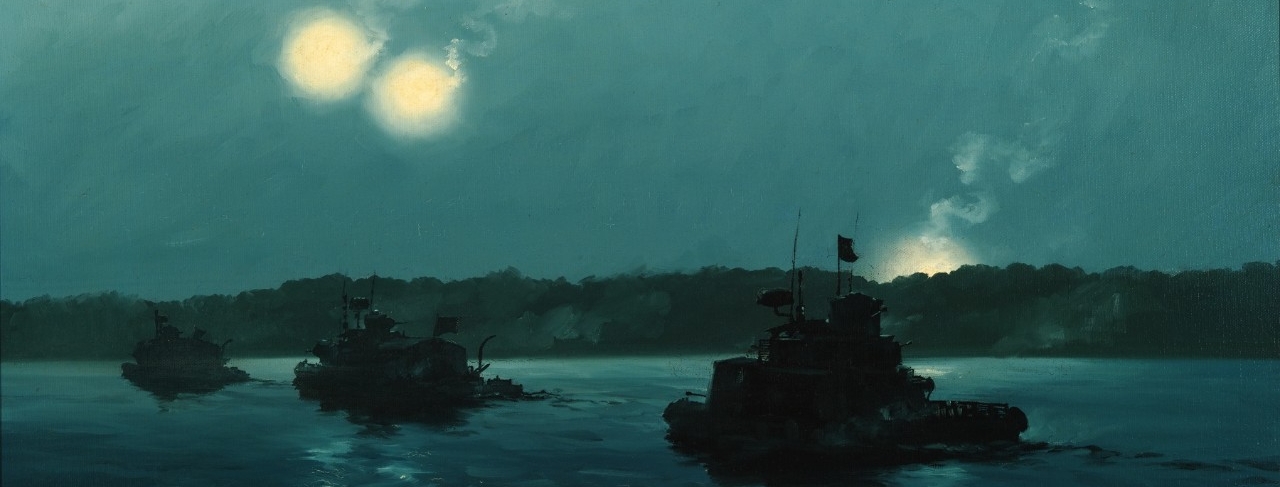
The Vietnam Experience
The U.S. Navy participated in a wide variety of roles and missions during the Vietnam War. Navy combat artists recorded many of these activities, typically sharing the same dangers as the sailors and Marines they accompanied. In the South China Sea and the Gulf of Thailand, ocean going "blue water" Navy ships provided artillery, aviation, logistic, medical, and other support to aid in America’s defense of a non-communist Southeast Asia. The big guns of ships on the offshore "firing line" provided essential naval gunfire support to allied forces engaged in combat operations ashore. Aircraft carriers on "Yankee Station" (off North Vietnam) and "Dixie Station" (off South Vietnam) provided air support for the sailors and soldiers fighting south of the Demilitarized Zone (DMZ) in the Republic of (South) Vietnam. The carriers also served as bases for naval aircraft operating over North Vietnam and Laos, including perilous missions against North Vietnamese forces on the Ho Chi Minh Trail.
Along the coasts and rivers of the Republic of Vietnam, the inshore, or "brown water" Navy’s fast patrol boats, armored vessels, and support ships sought to interdict enemy supplies and troop movements, as well as fighting alongside the U.S. Army to defeat enemy forces in battles near water. Since much of the conflict was a guerrilla war, there generally were no front lines. Surprise encounters with the enemy occurred often, and naval personnel need to maintain constant vigilance. Shore-based Navy helicopters operated in support of the brown water Navy, and Navy SEALs (Sea, Air and Land) conducted hazardous special operations along the waterways of the Republic of Vietnam.
In addition to non-combat roles elsewhere in Southeast Asia, the Navy was onshore in the Republic of Vietnam too. Navy Mobile Construction Battalions (Seabees) continued their tradition of expert military engineering in support of combat troops, while also engaging in civil action projects to improve the lives of Vietnamese civilians. Navy medical personnel and chaplains were attached to U.S. Marine combat units, providing crucial aid and comfort to the troubled, the wounded and the dying. Without the hard work of Navy personnel operating logistical shore facilities, the massive quantities of essential war materials arriving by sea would never have reached allied military forces.
Navy combat artists recorded all of these aspects of naval operations. For those who were not there, the scenes depicted here give a visual sense of the Vietnam War: the colors, the landscape, the people, and adrenaline-charged combat actions.


